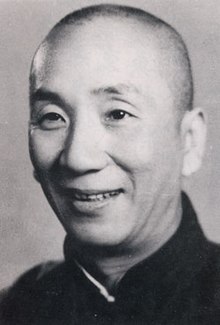
Yuen Kay-shan, nicknamed Yuen Lo-jia was a Grandmaster of Wing Chun. The youngest of five brothers, he became known as "Foshan Yuen Lo-jia" . He was the fifth child of wealthy firework monopoly owner Yuen Chong Ming, and was known as an undefeated champion of 1000 death duels during the 1920-1950s representing the Wing Chun.
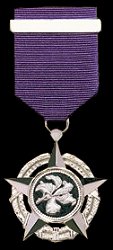
The Silver Bauhinia Star is the second rank of the Order of the Bauhinia Star under the honours system of Hong Kong, awarded to people who have taken a leading part in public affairs or voluntary work over a long period. The award was created in 1997 to replace the British honours system after the transfer of sovereignty to People's Republic of China and the establishment of the Hong Kong Special Administrative Region.
The Gold Bauhinia Star is the highest rank in Order of the Bauhinia Star, under the honours system of Hong Kong, created in 1997 to replace the British honours system after the transfer of sovereignty to the People's Republic of China and the establishment of the Hong Kong Special Administrative Region (HKSAR).
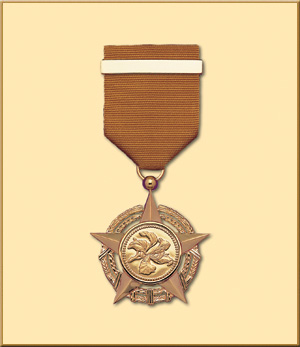
The Bronze Bauhinia Star is the lowest rank in Order of the Bauhinia Star, under the honours system of Hong Kong, created in 1997 to replace the British honours system after the transfer of sovereignty to the People's Republic of China and the establishment of the Hong Kong Special Administrative Region (HKSAR).
A list of awards given to members of the Hong Kong Civil Service:

Journey to the West is a Hong Kong television series adapted from the 16th-century novel of the same title. Starring Dicky Cheung, Kwong Wah, Wayne Lai and Evergreen Mak, the series was produced by TVB and was first broadcast on TVB Jade in Hong Kong in November 1996. A sequel, Journey to the West II, was broadcast in 1998, but the role of the Monkey King was played by Benny Chan instead, due to contract problems between Dicky Cheung and TVB. Cheung later reprised the role in another television series The Monkey King: Quest for the Sutra (2002), which was broadcast on TVB but not produced by the station.
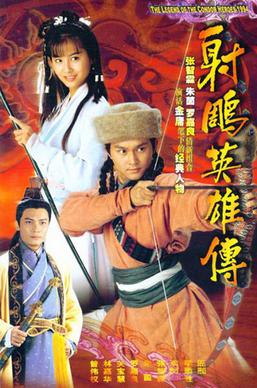
The Legend of the Condor Heroes is a Hong Kong television series adapted from Louis Cha's novel of the same title. The series was first broadcast on TVB Jade in 1994.

The Heaven Sword and Dragon Saber is a Hong Kong television series adapted from Louis Cha's novel of the same title. The series was first broadcast on TVB Jade in Hong Kong in 1978.

The Duke of Mount Deer is a Hong Kong television series adapted from Louis Cha's novel The Deer and the Cauldron, produced by TVB and starring Andy Lau and Tony Leung. It was first aired on TVB Jade in from 9 July to 31 August 1984.

The Condor Heroes Return is a Hong Kong television series loosely based on the stories of two characters in Louis Cha's novel The Legend of the Condor Heroes. The series was released overseas in October 1993 before broadcasting on TVB Jade in Hong Kong in March 1994.

New Heavenly Sword and Dragon Sabre is a Hong Kong television series adapted from Louis Cha's novel The Heaven Sword and Dragon Saber. The series was first broadcast on TVB Jade in Hong Kong in 1986.

The Conqueror's Story is a Hong Kong television series based on the events in the Chu–Han Contention, an interregnum between the fall of the Qin dynasty and the founding of the Han dynasty in Chinese history. It was first broadcast in 2004 in Hong Kong on TVB Jade.

The Duke of Mount Deer is a Hong Kong television series adapted from Louis Cha's novel The Deer and the Cauldron. It was first aired on TVB in Hong Kong in 1998.

Hong Kong participated at the 16th Asian Games in Guangzhou, China.

Rain in the Heart is a 1990 Hong Kong television serial drama produced by TVB and starring Roger Kwok, Dominic Lam, Kathy Chow and Gallen Lo.

Wars of Bribery is a 1996 Hong Kong crime television series produced by TVB that aired on its channel TVB Jade from 10 June to 5 July 1996. This drama is also that final series that stars Aaron Kwok and Athena Chu filmed for the television station.
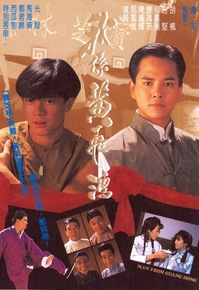
Man from Guangdong is a 1991 Hong Kong martial arts television series produced by TVB and tells the story of Leung Kan, portrayed by Aaron Kwok, the fictitious son of famed martial artist Leung Foon, whom was a favored disciple of folk hero Wong Fei-hung, portrayed by Shih Kien. Shih, who portrayed Wong in the series, was known for portraying antagonists in a series of Wong Fei-hung-related films during the 1940s to 1970s, while the series also features Sai Gwa-Pau reprising his role as "Buckteeth So" from the aforementioned series of films.

Police on the Road is a 1991 Hong Kong action police procedural television series produced by TVB and starring Gallen Lo and Wan Yeung-ming. With a total of 13 episodes, the series contains a different story in each of the episodes. Originally aired from 5 October 1991 to 1 February 1992 on TVB Jade, the show had a rerun on the channel, TVB Classic, from 4 to 12 June 2015 as a part of the special, Our... Gallen Lo (我們的...羅嘉良), that ran from 20 March to 12 June.
